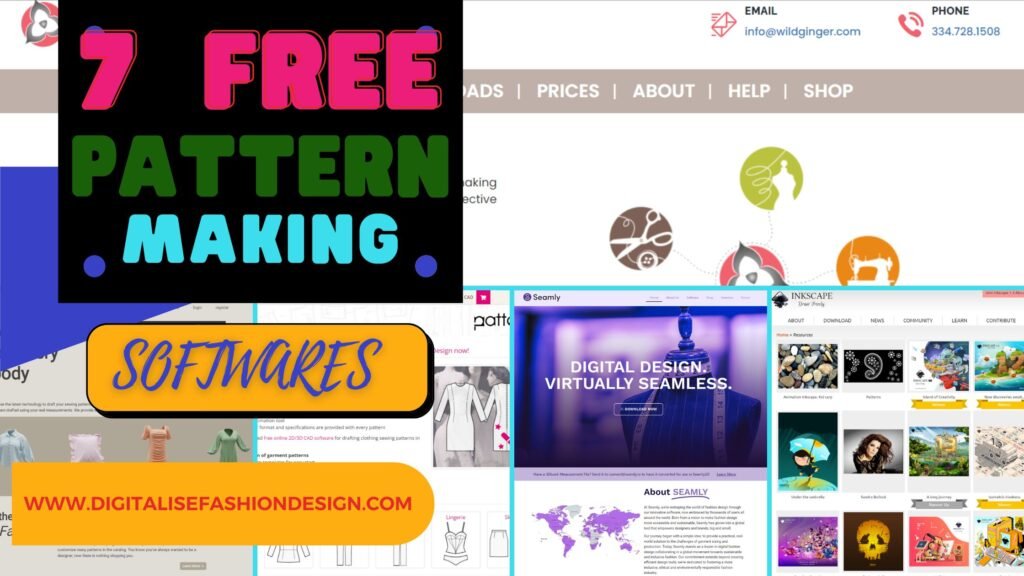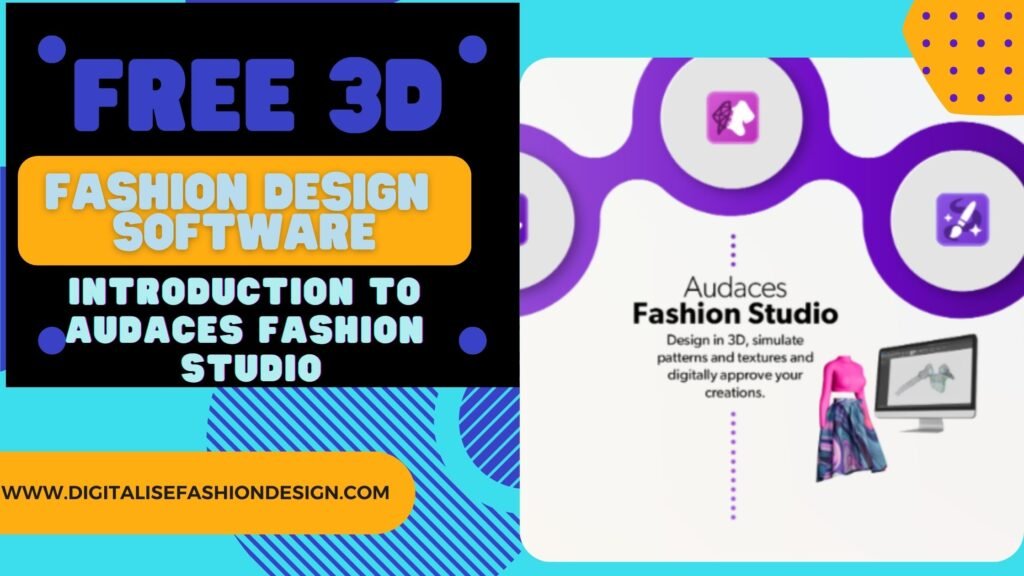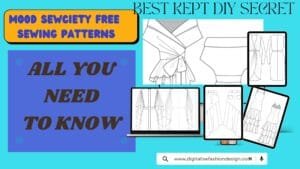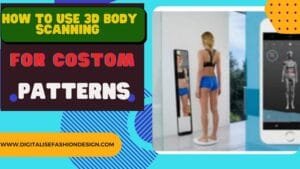3D modeling in clothing design involves creating digital models in three dimensions, allowing pattern makers to preview and test their designs virtually before making a physical prototype.
This process is valuable for creating unique pieces and streamlining mass production in retail and wholesale.
By using 3D modeling to simulate clothing fit on different body types, accuracy is improved, and resources are saved during production.
Essentially, 3D fashion modeling is a powerful tool that enhances the clothing design process by providing a virtual platform for designers to experiment with their creations before producing a physical prototype.
Moreover, by simulating fit on various body types, this method can significantly enhance accuracy and efficiency in clothing production.
Learn more about how 3D digital fashion design works and the benefits it brings to the clothing industry.
If you’re new to 3D fashion modeling, this transformative technique can greatly benefit modelers and other fashion industry experts.
By leveraging 3D modeling tools, you can modernize your manual processes and streamline your workflow.
By integrating 3D modeling into your fashion enterprise, you can boost productivity and ensure alignment with current industry norms.
Advantages of 3D modeling in clothing design
Are you still using traditional paper or fabric molds to create patterns? It might be time to explore 3D modeling for pattern creation, which offers numerous advantages over conventional techniques.
Here are the key benefits to discover:
Measurement Precision Enhancement:
One of the primary advantages of utilizing 3D modelling for patterns is the ability to craft accurate and well-fitted components.
With precise measurements of models, one can make fine adjustments , leading to fewer errors and challenges during production. By using 3D modelling for patterns, you can detect and rectify errors before cutting the fabric, reducing the need for costly rework and saving both time and money.
Time Efficiency:

The entire 3D modeling process is digital, enabling swift and straightforward creation and modification of patterns. This accelerates the production cycle, from pattern creation to the mass production of components. By leveraging 3D modeling, you can optimize production timelines and enhance the efficiency of garment piece creation.
Simplified Grading:
3D modeling softwares also simplifies pattern grading, allowing for easy online modifications while preserving the original prototype. However, the ease of grading with 3D modeling software varies depending on the specific program in use.
Some softwares are more intuitive and user-friendly, while others may require more expertise and practice to develop intricate models.
Nevertheless, the overall simplicity of grading with 3D modeling remains a significant advantage over traditional pattern-making approaches
.
More advantages of 3D modeling
Cost savings and improment in communication:
Implementing 3D modeling can lead to significant cost reductions in the fashion sector by generating virtual product prototypes prior to physical production.
This approach enables design testing and validation without the necessity for physical prototypes.
CHECKOUT THESE RELATED BLOGPOST
This results in savings on tools and materials.
It also facilitates the early identification of design flaws, preventing rework and material waste.
Furthermore, the communication among team members, suppliers, and customers fosters collaboration and helps clearer product visualization.
Conducting production simulations and testing various materials and processes can reveal optimization opportunities, thereby reducing costs and conserving resources.
Sustainability
3D modeling serves as a sustainable solution in the fashion industry.
This curbs CO2 emissions and minimize material waste.
Virtual prototypes of 3D models diminish the fabric and resource requirements for garment production.
This ultimately reduce waste production in the manufacturing process.
Pattern creators can develop virtual models and experiment with different patterns before crafting a physical parts.
This strongly help businesses to identify the most material-efficient design and minimize waste.
By embracing 3D modeling and integrating it into the production workflow, you can lessen your environmental footprint and improve sustainability in the fashion domain.
6 3D fashion modeling softwares to know
1. Clo 3D:
Clo 3D is a popular 3D fashion design software that allows users to create realistic 3D garments and visualize how they drape and fit on virtual models. It offers a user-friendly interface and powerful simulation capabilities.
**Pros**: realistic garment simulation, easy-to-use interface, extensive library of virtual fabrics and materials.
**Cons**: Can be resource-intensive, especially for complex simulations.
**Subscription Cost**: Clo 3D’s pricing starts at around $50 per month for the standard version.
2. Browzwear:
Browzwear is a 3D fashion design software known for its advanced simulation features and integration with popular design tools like Adobe Illustrator. It offers accurate garment visualization and pattern-making capabilities.
**Pros**: accurate garment simulation, seamless integration with design tools, cloud collaboration features.
**Cons**: Steeper learning curve compared to some other software options.
**Subscription Cost**: Browzwear’s subscription plans start at approximately $99 per month.
More Examples of 3D fashion modeling softwears
CLICK TO GET YOUR BODY MEASUREMENT WORKSHEET AND START YOUR CAD PATTERN DRAFTING JOURNEY EASILY
3. Optitex:
This is a 3D fashion design software that provides comprehensive tools for pattern-making, grading, and virtual prototyping. It is widely used in the industry for its advanced simulation capabilities.
**Pros**: robust pattern-making tools, accurate simulation, integration with CAD software.
**Cons**: Requires some training to fully utilize its features.
**Subscription Cost**: Optitex’s pricing varies based on the specific features and customization required, with subscription plans typically starting at around $150 per month.
4. Marvelous Designer:
**Description**: Marvelous Designer is a 3D modeling software focused on creating dynamic 3D clothing for games, animations, and simulations. It offers intuitive pattern-making tools and realistic cloth simulation.
**Pros**: intuitive interface, realistic cloth simulation, versatility for creating dynamic garments.
**Cons**: Primarily suited for creating virtual clothing for digital media rather than traditional fashion design.
**Subscription Cost**: Marvelous Designer offers subscription plans starting at approximately $39 per month.
Interesting Examples of 3D fashion modeling softwears
5. CLO Virtual Fashion:
Description:
CLO Virtual Fashion is a comprehensive 3D fashion design software that combines pattern-making, draping, and visualization tools on a single platform. It is known for its realistic garment simulation and collaboration features.
**Pros**: realistic garment simulation, all-in-one platform for design and visualization, collaboration tools.
**Cons**: Higher price point compared to some other software options.
**Subscription Cost**: CLO Virtual Fashion’s pricing typically starts at around $99 per month.
6. Audaces360:
**Description**: Audaces360 is 3D fashion design software that offers a range of tools for pattern-making, grading, and virtual prototyping. It is designed to streamline the design and production process in the fashion industry.
**Pros**: comprehensive design and production tools; integration with CAD software; cloud-based collaboration.
**Cons**: Limited availability of tutorials and resources compared to more established software.
**Subscription Cost**: Audaces360’s pricing varies based on the specific features and customization required, with subscription plans typically starting at around $120 per month.
Conclusion.
3D modeling is transforming the clothing design and production industry by offering unparalleled precision, creativity, and efficiency.
From streamlining the design process to reducing material waste and production costs, the benefits of 3D modeling are vast and transformative.
Designers can visualize and iterate on their concepts in real-time, while manufacturers can ensure a more accurate and sustainable production process.
As technology continues to evolve, 3D modeling is set to become an indispensable tool, pushing the boundaries of fashion and enabling the creation of innovative and customized garments that meet the demands of a rapidly changing market.








